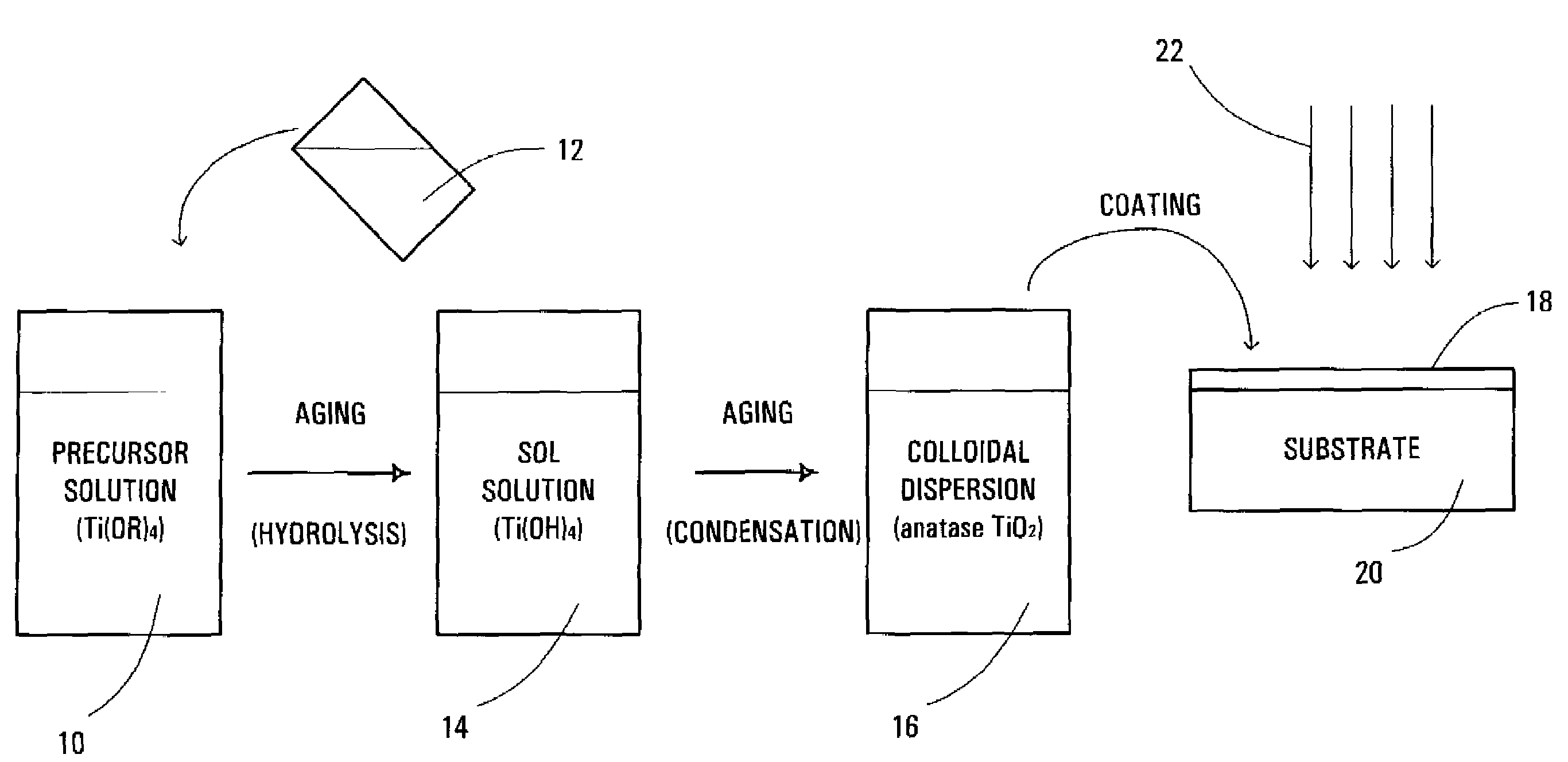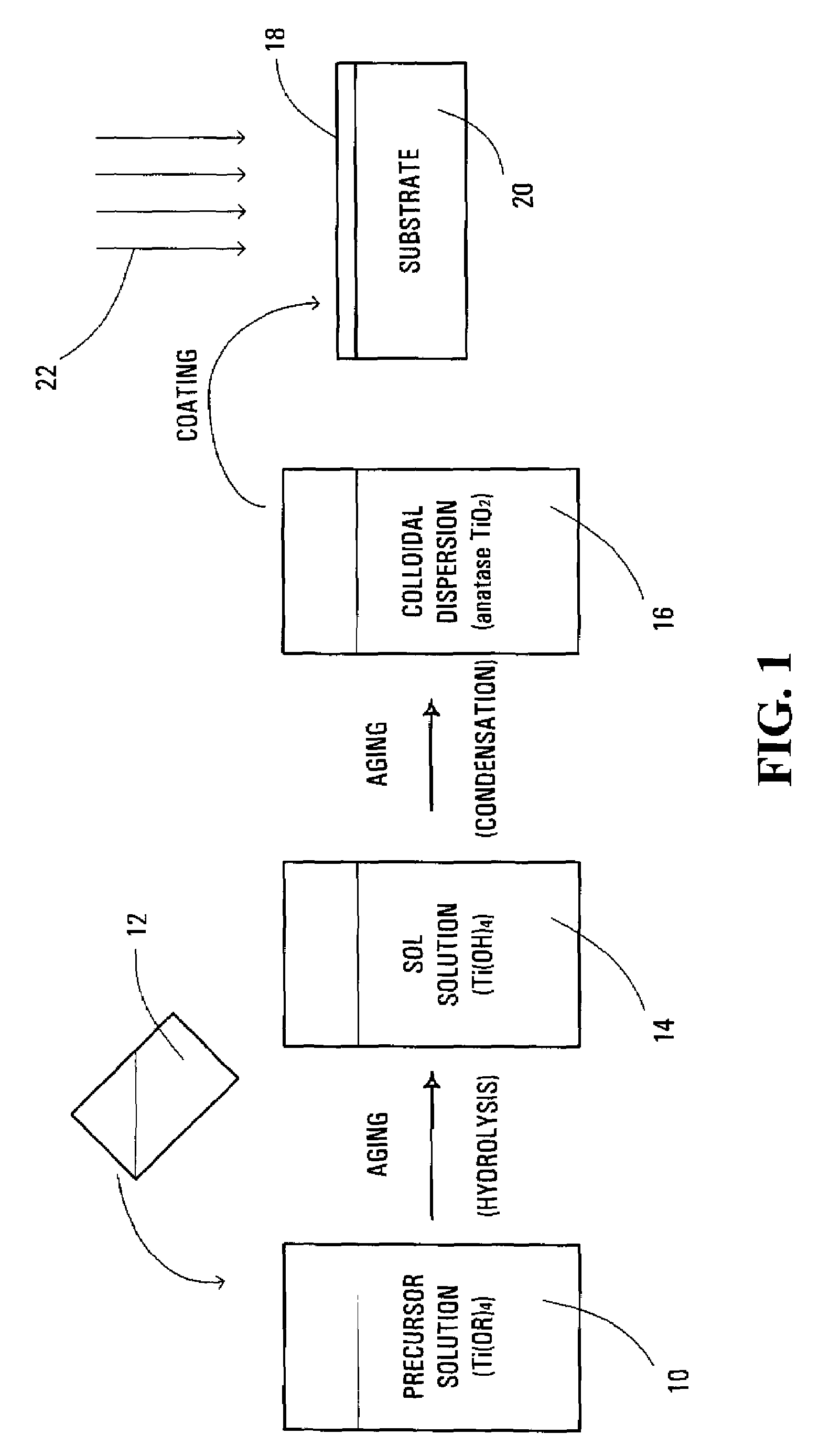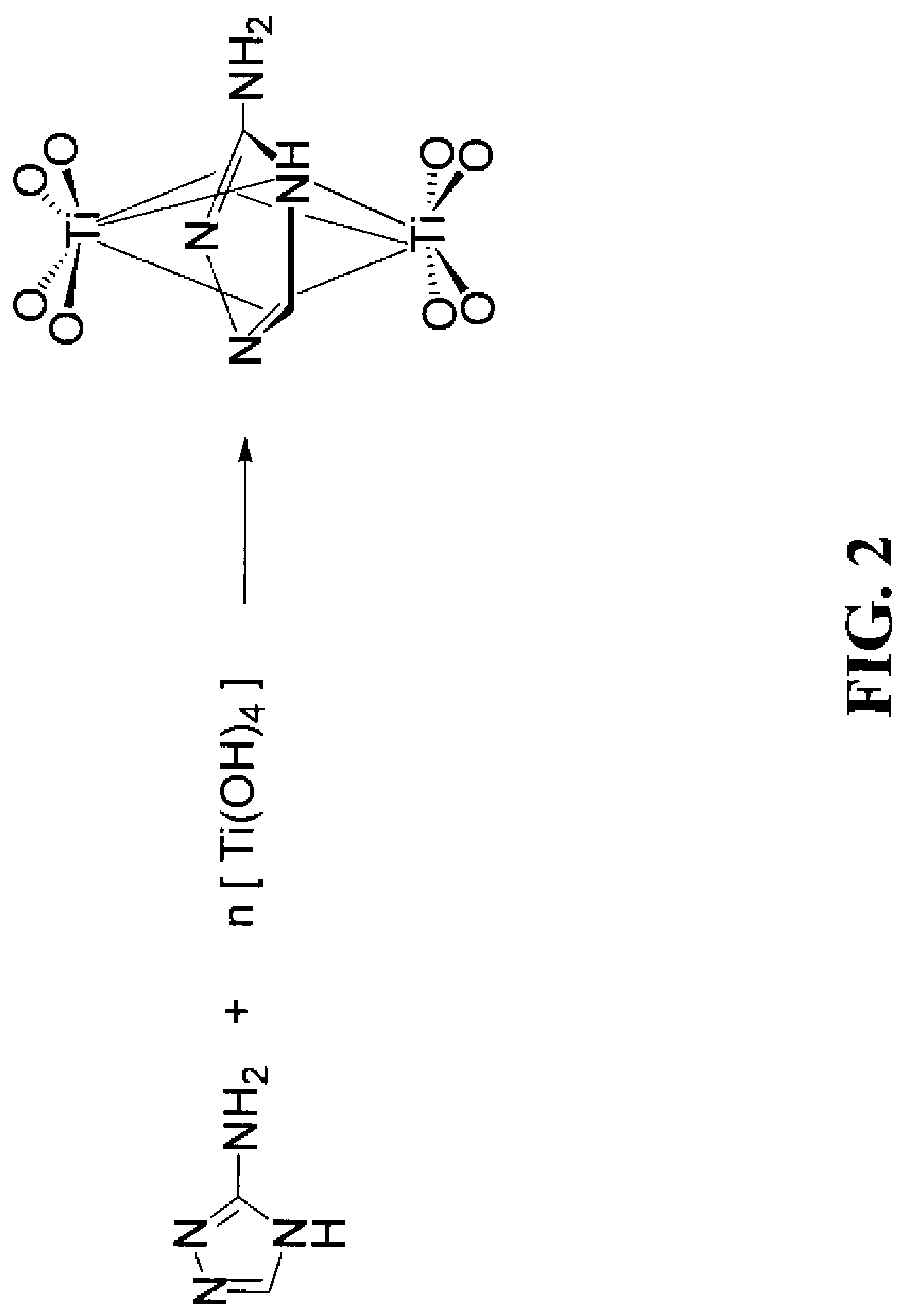Method and solution for forming anatase titanium dioxide, and titanium dioxide particles, colloidal dispersion and film
a technology of titanium dioxide and colloidal dispersion, which is applied in the field of photocatalytic titanium dioxide (tio2), can solve the problems of high temperature heating of particles or films, inability to de-lamination of coated tiosub>2/sub>film from the underlying substrate, and inability to achieve high temperature heating. , to achieve the effect of improving the properties of the formed film and facilitating the aging process
- Summary
- Abstract
- Description
- Claims
- Application Information
AI Technical Summary
Benefits of technology
Problems solved by technology
Method used
Image
Examples
example 1
[0061]In this example, a number of samples were prepared. The solutions for preparing these samples were water based. The solution for each sample was prepared as follows:[0062]1. 0.1 g 5-aminotetetrazole monohydrate was added into 24-ml distilled water.[0063]2. 0.78 g oxalic acid dehydrate and 1.0 ml Triton X-100 were added.[0064]3. Appropriate amount of TEOA was added to adjust the pH of the solution.[0065]4. 3.5 ml titanium (IV) isopropoxide was added drop-wise through a funnel.
[0066]The final pH of the solution was higher than about 5 but varied for different samples.
[0067]The solution was stirred and aged at about 80° C. for about 24 hours until a stable, homogenous and transparent sol solution was formed. The sol solution was sealed in a Teflon™-lined autoclave and aged at about 120° C. for about 24 hours to nucleate and grow anatase phase TiO2 particles. The colloidal dispersion of TiO2 particles was spin-coated on a Si(100) substrate or a glass plate.
[0068]FIG. 4 shows the X...
example 2
[0073]In this example, the solution was alcohol based and was prepared as follows:[0074]1. 0.1 g of 2-amino-5-mercapto-1,3,4-thiadiazole was added to a 24-ml iso-butanol solution.[0075]2. 1.1 ml of lactic acid and 0.8 ml of Triton X-100 were added.[0076]3. 4.5 ml of Titanium (IV) n-butoxide was added drop-wise through a funnel.
[0077]The solution was stirred at 80° C. for 24 hours to form a yellow-orange coloured sol solution. The sol solution was sealed in a Teflon-lined autoclave and treated at 120° C. for 24 hours to form TiO2 nano-particles.
[0078]Sample TiO2 films were formed from the TiO2 nanoparticles. Test results show that the films were substantially formed of anatase TiO2. The sample films also exhibited similar photo-catalytic activity as in Example 1.
[0079]Experimental data also showed that films formed with TiO2 particles having a heterocyclic ligand and a PEG surfactant therein have improved crack-resistance and adhesion, as compared to films formed with pure TiO2.
PUM
| Property | Measurement | Unit |
|---|---|---|
| temperature | aaaaa | aaaaa |
| temperature | aaaaa | aaaaa |
| temperature | aaaaa | aaaaa |
Abstract
Description
Claims
Application Information
 Login to View More
Login to View More - R&D
- Intellectual Property
- Life Sciences
- Materials
- Tech Scout
- Unparalleled Data Quality
- Higher Quality Content
- 60% Fewer Hallucinations
Browse by: Latest US Patents, China's latest patents, Technical Efficacy Thesaurus, Application Domain, Technology Topic, Popular Technical Reports.
© 2025 PatSnap. All rights reserved.Legal|Privacy policy|Modern Slavery Act Transparency Statement|Sitemap|About US| Contact US: help@patsnap.com



